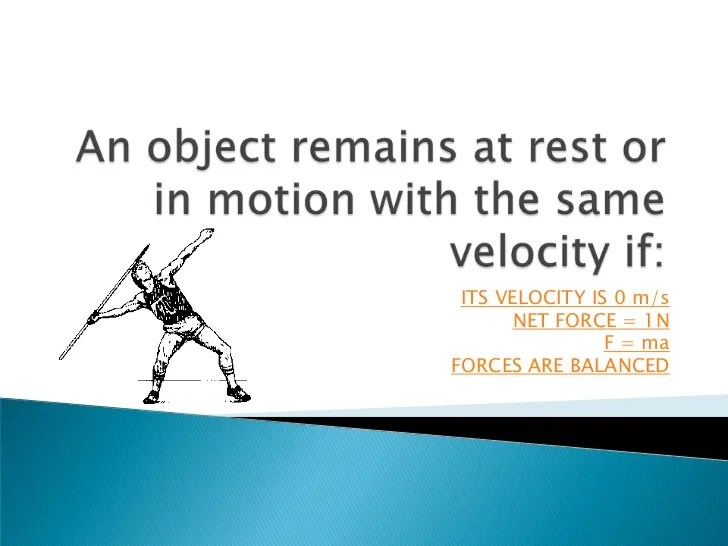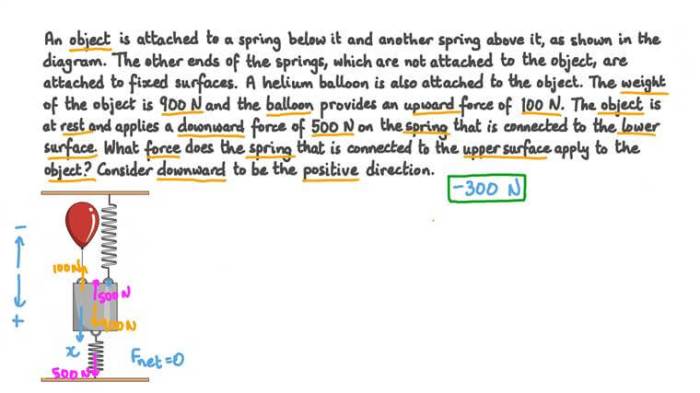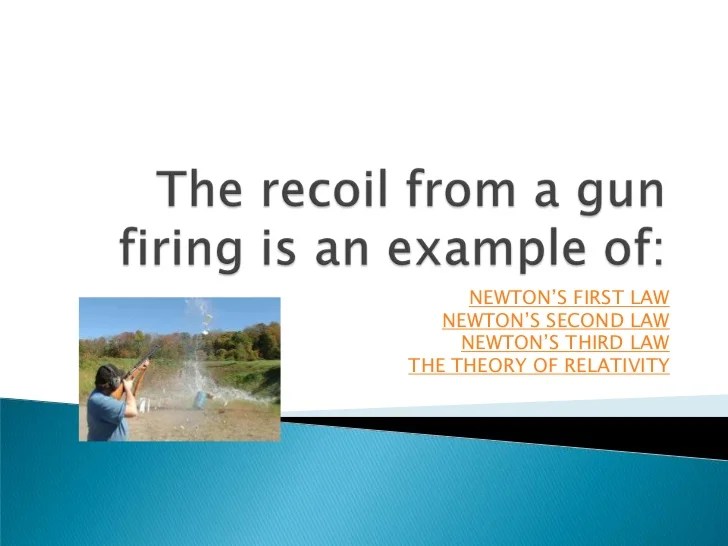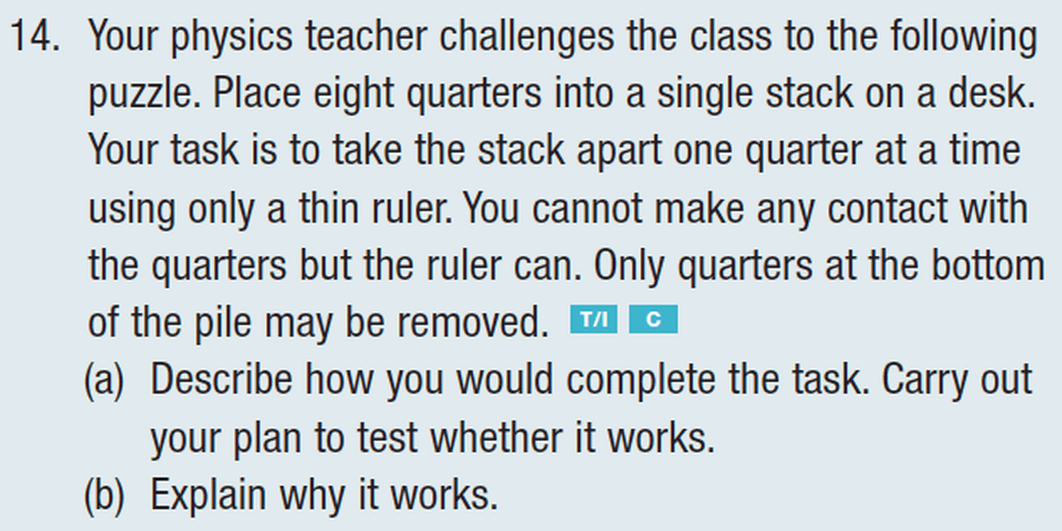Welcome to our in-depth Newton’s Laws of Motion Quiz Review, a comprehensive guide designed to enhance your understanding of these fundamental principles that govern the motion of objects. Throughout this review, we will delve into each of Newton’s three laws, exploring their implications and applications in various fields.
As we journey through this review, you will gain a thorough grasp of Newton’s Laws of Motion, equipping you with a solid foundation for further exploration in physics and beyond.
Newton’s First Law
Newton’s First Law of Motion, also known as the law of inertia, states that an object at rest stays at rest, and an object in motion stays in motion with the same speed and in the same direction unless acted upon by an unbalanced force.
This law essentially means that objects resist any change in their motion. A stationary object will remain stationary, and a moving object will continue moving at a constant speed in a straight line unless an external force acts upon it.
Examples of Newton’s First Law in Everyday Life
- A book resting on a table remains at rest until someone picks it up.
- A car driving down the road continues to move at a constant speed until the driver applies the brakes or turns the steering wheel.
- A ball thrown into the air will continue to move in a straight line until it is acted upon by the force of gravity, causing it to fall back to the ground.
Concept of Inertia
Inertia is the tendency of an object to resist any change in its motion. This means that an object at rest will stay at rest, and an object in motion will continue moving at a constant speed in a straight line unless acted upon by an external force.
Inertia is a fundamental property of matter and is proportional to the mass of the object. The more massive an object, the greater its inertia.
Newton’s Second Law

Newton’s Second Law of Motion, also known as the law of acceleration, describes the relationship between an object’s mass, its acceleration, and the net force acting upon it. It states that the acceleration of an object is directly proportional to the net force acting on the object, and inversely proportional to the object’s mass.
Derivation of the Equation for Newton’s Second Law
The equation for Newton’s Second Law is F = ma, where F is the net force acting on the object, m is the object’s mass, and a is the object’s acceleration. This equation can be derived from the definition of acceleration, which is the rate of change of velocity.
By taking the derivative of velocity with respect to time, we get the following equation:“`a = dv/dt“`where a is the acceleration, v is the velocity, and t is the time.If we multiply both sides of this equation by the mass of the object, we get the following equation:“`ma = m(dv/dt)“`But the left-hand side of this equation is just the net force acting on the object, so we can rewrite the equation as follows:“`F = ma“`This is the equation for Newton’s Second Law of Motion.
Examples of Newton’s Second Law
Newton’s Second Law can be used to explain a wide variety of phenomena, including the motion of objects on Earth, the motion of planets around the Sun, and the motion of galaxies in the universe. Here are a few examples of Newton’s Second Law in action:* When you push a book across a table, the force you apply to the book causes it to accelerate.
The greater the force you apply, the greater the acceleration will be.
- When a car brakes, the force of friction between the tires and the road causes the car to decelerate. The greater the force of friction, the greater the deceleration will be.
- When a rocket launches into space, the force of the rocket’s engines causes it to accelerate. The greater the force of the engines, the greater the acceleration will be.
Newton’s Second Law is a fundamental law of physics that can be used to explain a wide variety of phenomena. It is one of the most important laws in physics, and it has played a major role in the development of our understanding of the universe.
Newton’s Third Law

Newton’s Third Law of Motion states that for every action, there is an equal and opposite reaction. In other words, when one object exerts a force on a second object, the second object exerts an equal and opposite force on the first object.
Concept of Action and Reaction Forces
The action force is the force exerted by the first object on the second object, while the reaction force is the force exerted by the second object on the first object. The action and reaction forces are always equal in magnitude but opposite in direction.
Examples of Newton’s Third Law in Real-World Scenarios
- When a person pushes against a wall, the wall pushes back with an equal and opposite force.
- When a rocket launches, the rocket engines exert a force on the rocket, and the rocket exerts an equal and opposite force on the engines.
- When two cars collide, each car exerts an equal and opposite force on the other car.
Applications of Newton’s Laws

Newton’s Laws of Motion form the cornerstone of classical mechanics and have far-reaching applications in engineering, technology, sports, and everyday life.
Engineering and Technology
Newton’s Laws guide the design and analysis of structures, machines, and vehicles. Engineers use these laws to calculate forces, stresses, and accelerations, ensuring the stability and safety of buildings, bridges, and aircraft.
- Structural engineering: Calculating the load-bearing capacity of bridges, buildings, and other structures.
- Automotive engineering: Designing vehicles with optimal performance, handling, and braking.
- Aerospace engineering: Analyzing the forces and trajectories of aircraft, spacecraft, and rockets.
Sports and Athletics
Newton’s Laws play a crucial role in understanding and improving athletic performance.
- Biomechanics: Analyzing the forces acting on athletes during various movements, such as running, jumping, and throwing.
- Equipment design: Optimizing the design of sports equipment, such as golf clubs, tennis rackets, and running shoes, to enhance performance.
li>Training strategies: Developing training programs that leverage Newton’s Laws to improve strength, speed, and agility.
Everyday Phenomena
Newton’s Laws help us comprehend and explain a wide range of everyday occurrences.
- Motion of objects: Predicting the trajectory of a thrown ball or the acceleration of a car.
- Stability and equilibrium: Understanding why objects fall or remain upright, and how to prevent accidents.
- Fluid dynamics: Explaining the behavior of fluids, such as the flow of water or the flight of an airplane.
Limitations of Newton’s Laws
Newton’s Laws of Motion provide a comprehensive framework for describing the motion of objects under various conditions. However, these laws have certain limitations, particularly when applied to certain high-speed or relativistic scenarios.
One significant limitation of Newton’s Laws is their inability to account for relativistic effects. As objects approach speeds comparable to the speed of light, their behavior deviates from the predictions of Newtonian physics. In such cases, the effects of special relativity become significant, and Newton’s Laws fail to accurately describe the motion of objects.
Transition from Newtonian Physics to Special Relativity
The transition from Newtonian physics to special relativity involves considering the effects of time dilation and length contraction, which are not accounted for in Newton’s Laws. In special relativity, time is not absolute but rather relative to the observer’s frame of reference.
As an object approaches the speed of light, time slows down for that object relative to an observer at rest. Similarly, the length of an object also contracts in the direction of its motion.
These relativistic effects become significant when objects reach speeds close to the speed of light. In such cases, the equations of special relativity, such as the Lorentz transformations, must be used to accurately describe the motion of objects. Newton’s Laws, while still applicable for low-speed scenarios, are no longer sufficient to describe the behavior of objects in relativistic regimes.
Practice Questions

Newton’s Laws of Motion provide a foundation for understanding the behavior of objects in motion. To test your comprehension, here’s a table with practice questions that cover each law individually:
| Question | Answer/Solution |
|---|---|
| An object at rest remains at rest unless acted upon by an unbalanced force. (Newton’s First Law) | This principle is known as the law of inertia. |
| The acceleration of an object is directly proportional to the net force acting on it and inversely proportional to its mass. (Newton’s Second Law) | F = ma |
| For every action, there is an equal and opposite reaction. (Newton’s Third Law) | This law implies that forces occur in pairs. |
Interactive Simulations
Interactive simulations offer an engaging way to demonstrate the principles of Newton’s Laws of Motion.
These simulations allow users to manipulate variables such as mass, force, and velocity, providing a hands-on experience that enhances understanding.
Design Considerations, Newton’s laws of motion quiz review
- Simulations should be designed to clearly illustrate the key concepts of each law.
- They should allow for a range of values to be manipulated, enabling users to explore the effects of different variables.
- Visual representations, such as graphs and animations, can help users visualize the laws in action.
Quick FAQs: Newton’s Laws Of Motion Quiz Review
What is Newton’s First Law of Motion?
Newton’s First Law states that an object at rest will remain at rest, and an object in motion will continue moving at a constant velocity unless acted upon by an external force.
How is Newton’s Second Law of Motion used in engineering?
Newton’s Second Law (F=ma) is applied in engineering to calculate forces, design structures, and analyze the motion of objects in various systems.
What is the concept of action and reaction forces in Newton’s Third Law?
Newton’s Third Law explains that for every action, there is an equal and opposite reaction. These forces act on different objects, providing a balanced interaction.
